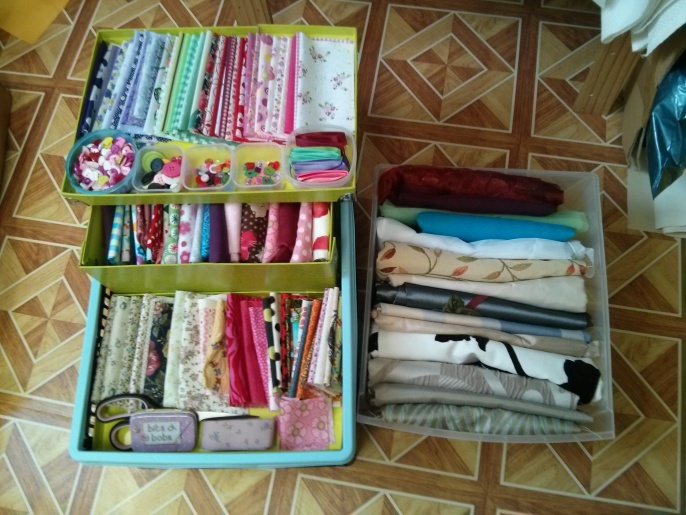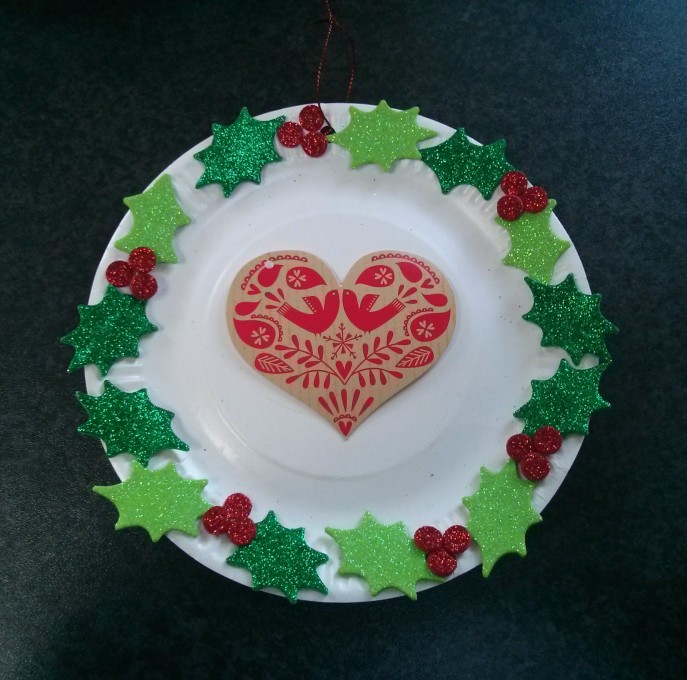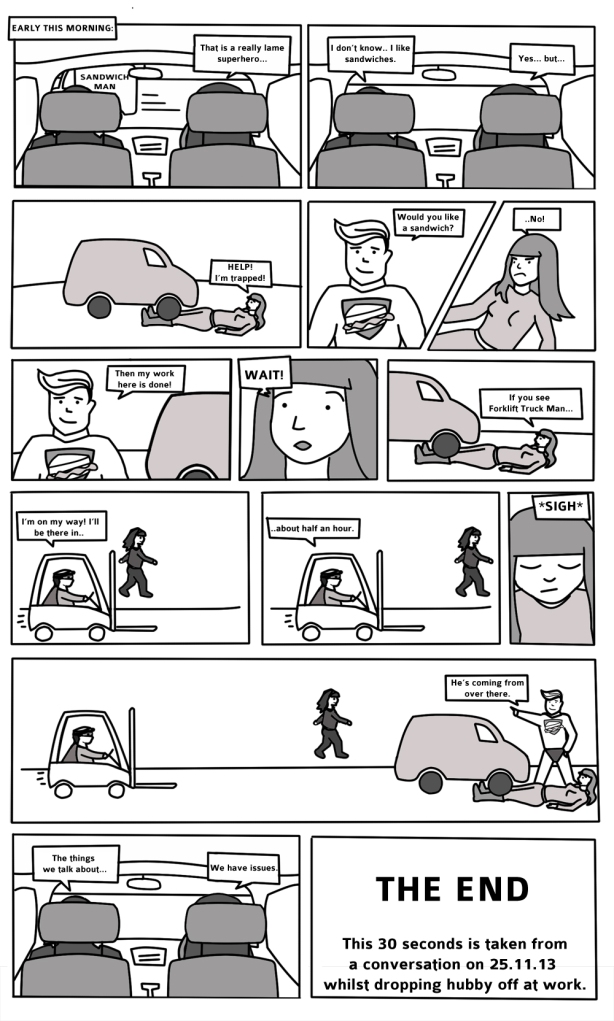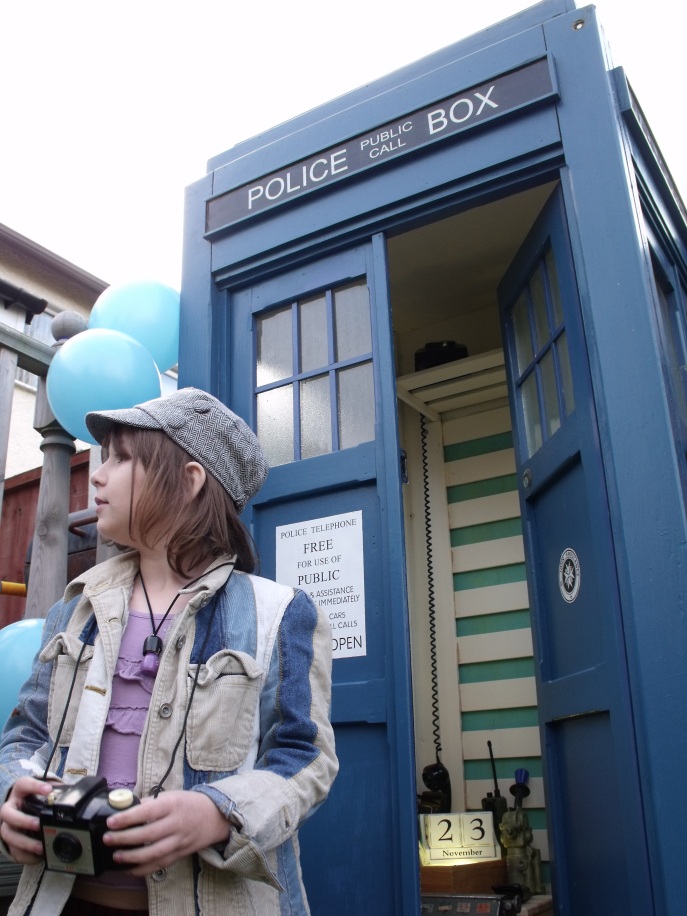This week I have been up in my loft room which is supposed to be my little craft room and hideaway. It has been somewhat neglected and filled with things that aren’t really very useful and my craft stash has literally been stashed into corners, drawers and bags. I decided to deal with my bin bag of fabric scraps, fat quarters and other random bits that had become out of control.
I am really pleased with what I came up with. I used the following boxes that were up in my loft:
One collapsible crate
Two boxes with lids, one larger than the other. (Mine are pretty boxes but regular shoeboxes would work so long as they have a seperate lid)
Small plasitc containers for buttons etc.
One extra plastic tub box
The larger pieces of fabric were folded to fit into the extra tub box standing up, ensuring that they fit into the width of the box, and that there was one folded edge showing. (Imagine stacking your CDs with the spines showing.)
The larger of the two shoeboxes I placed inside the collapsible crate. This particular box is not necessary for the project but can help to divide the fabrics if you have a lot to store. I filled the box with medium sized pieces of fabric and then put remaining larger pieces around this box to fill the collapsible crate.
The fat quarters were then folded and packed in the same way into the smaller shoebox which sits neatly inside the collapsible crate to a depth of around 3 inches.
Then I had to deal with the patchwork squares and other small scraps. The box lids come into play at this point. The larger of the two lids sits horizontally across the top of the smaller shoebox, or across the front of the collapsible crate when I fold it away.
Each patchwork square was folded in half. Starting at the left hand side of the lid I laid the first piece down with the folded edge to the left. Each piece was then laid on top of the last leaving the fold of the previous piece showing. This way you can easily pick out the pieces you want. I went to the extent of putting colours together for extra effect but it took a while. Repeat this process for the second lid, as it’s a smaller lid this fits neatly inside the collapsible crate next to the smaller shoebox, it can be lifted out easily to access the fabric underneath. I put all the bits of ribbon, buttons or other small bits in small plastic tubs and laid them along the edge of the box lids.
It took about an hour to go through my entire stash but it was worth it. What I love about the end result is that I can see each and every piece of fabric so I can find what I want really easily. It’s really versatile, you can move the lids around and stack the boxes in different ways, it’s a little like one of those boxes that opens out but without the price-tag. I didn’t realise just how much fabric I really had, lots of ideas came to mind when looking through it expect to see a new project on the blog soon!
Any boxes can help you sort your fabric out, the important bit is to fold the pieces and store them with a folded edge showing so you don’t have to dig through a stack of fabric which usually results in the whole lot not fitting into the box anymore!
Now to go through my paper stash and arrange it into colour order…. seriously!
Kitty x








